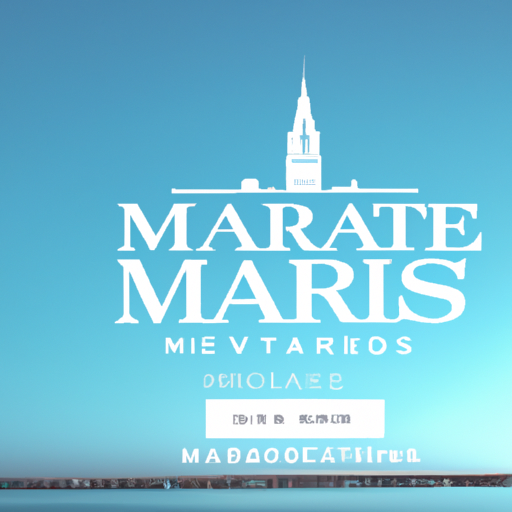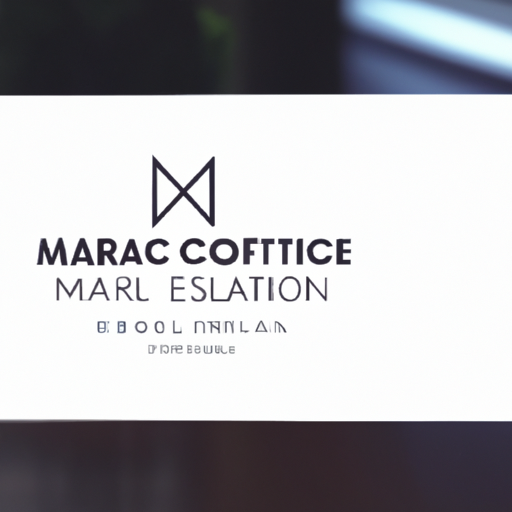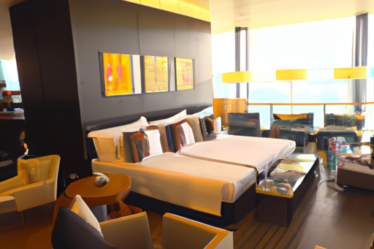
Expansion Strategies of Marriott in the Budget-Friendly Midscale Market
Marriott, one of the world’s largest hotel chains, has recently announced its plan to expand its footprint in the budget-friendly midscale market across North America. This move comes as part of Marriott’s broader strategy to cater to a wider range of travelers and tap into the growing demand for affordable accommodation options.
The budget-friendly midscale market has been gaining traction in recent years, with more and more travelers seeking affordable yet comfortable accommodations. Recognizing this trend, Marriott aims to capitalize on the opportunity by offering a range of budget-friendly options that still maintain the high standards of quality and service that the brand is known for.
To achieve this, Marriott plans to introduce new brands and concepts specifically tailored to the budget-friendly midscale market. These brands will offer a range of amenities and services that cater to the needs of budget-conscious travelers, such as complimentary breakfast, free Wi-Fi, and comfortable yet affordable room options.
Marriott’s expansion strategy in the budget-friendly midscale market is not limited to new brand introductions. The hotel chain also plans to convert some of its existing properties into budget-friendly midscale hotels. By leveraging its existing infrastructure and resources, Marriott can quickly and efficiently enter this market segment and meet the growing demand for affordable accommodations.
In addition to brand introductions and property conversions, Marriott also plans to invest in technology and innovation to enhance the guest experience in its budget-friendly midscale hotels. This includes implementing mobile check-in and keyless entry systems, as well as offering personalized recommendations and services through mobile apps.
Marriott’s focus on the budget-friendly midscale market is not only driven by the demand for affordable accommodations but also by the potential for long-term growth. With the rise of budget-conscious travelers, this market segment presents a significant opportunity for Marriott to expand its customer base and increase its market share.
Furthermore, Marriott’s expansion in the budget-friendly midscale market aligns with its commitment to sustainability and responsible tourism. By offering affordable accommodations, Marriott can make travel more accessible to a wider range of people while minimizing the environmental impact associated with luxury accommodations.
Marriott’s plan to increase its footprint in the budget-friendly midscale market across North America is a strategic move that capitalizes on the growing demand for affordable accommodations. By introducing new brands, converting existing properties, and investing in technology and innovation, Marriott aims to cater to the needs of budget-conscious travelers while maintaining its high standards of quality and service.
As Marriott expands its presence in the budget-friendly midscale market, it not only taps into a lucrative market segment but also contributes to the overall growth and development of the hospitality industry. With its commitment to sustainability and responsible tourism, Marriott sets an example for other hotel chains to follow, demonstrating that affordable accommodations can still offer a high level of comfort and service.
In conclusion, Marriott’s plan to increase its footprint in the budget-friendly midscale market across North America is a strategic move that aligns with the growing demand for affordable accommodations. By introducing new brands, converting existing properties, and investing in technology and innovation, Marriott aims to cater to the needs of budget-conscious travelers while maintaining its high standards of quality and service. This expansion not only taps into a lucrative market segment but also contributes to the overall growth and development of the hospitality industry.
Benefits and Challenges of Marriott’s Plan to Increase Footprint in the Budget-Friendly Midscale Market

Marriott, one of the world’s largest hotel chains, has recently announced its ambitious plan to expand its presence in the budget-friendly midscale market across North America. This move comes as part of Marriott’s strategy to cater to a wider range of travelers and tap into the growing demand for affordable accommodation options.
One of the key benefits of Marriott’s plan is the opportunity to reach a larger customer base. By entering the budget-friendly midscale market, Marriott can attract price-conscious travelers who are looking for quality accommodations at affordable prices. This segment of the market has been growing steadily in recent years, driven by factors such as the rise of budget airlines and the increasing popularity of travel among millennials.
Moreover, expanding into the budget-friendly midscale market allows Marriott to diversify its portfolio and reduce its reliance on the luxury and upscale segments. This is particularly important in times of economic uncertainty when consumers tend to tighten their belts and opt for more affordable options. By offering budget-friendly accommodations, Marriott can ensure a steady stream of revenue even during economic downturns.
Another advantage of Marriott’s plan is the potential for increased brand loyalty. By providing budget-friendly options, Marriott can attract a new generation of travelers who may not have considered staying at a Marriott property before. These travelers, once exposed to the Marriott brand, may be more likely to choose Marriott for their future travel needs, even when they can afford more expensive accommodations. This can lead to long-term customer relationships and increased revenue for the company.
However, there are also challenges that Marriott may face in implementing this plan. One of the main challenges is maintaining the quality and consistency of its offerings across different price points. Marriott is known for its high standards and luxurious amenities, and it will be crucial for the company to ensure that its budget-friendly midscale properties meet these expectations. Failure to do so could result in a negative impact on the overall brand image and reputation.
Additionally, Marriott will need to carefully manage its pricing strategy in the budget-friendly midscale market. While affordability is a key factor for travelers in this segment, Marriott must also ensure that its pricing is competitive and attractive compared to other players in the market. Finding the right balance between affordability and profitability will be essential for the success of Marriott’s expansion plan.
Furthermore, Marriott will need to invest in marketing and promotion to effectively reach its target audience in the budget-friendly midscale market. This segment of travelers may have different preferences and booking habits compared to luxury travelers, and Marriott will need to tailor its marketing efforts accordingly. Building brand awareness and generating demand for its budget-friendly properties will require a strategic and targeted approach.
In conclusion, Marriott’s plan to increase its footprint in the budget-friendly midscale market across North America presents both benefits and challenges. By tapping into this growing segment, Marriott can reach a wider customer base, diversify its portfolio, and potentially increase brand loyalty. However, maintaining quality, managing pricing, and investing in marketing will be crucial for the success of this expansion plan. With careful planning and execution, Marriott has the potential to establish a strong presence in the budget-friendly midscale market and further solidify its position as a leading player in the hospitality industry.
Impact of Marriott’s Expansion on the North American Budget-Friendly Midscale Market
Marriott, one of the world’s largest hotel chains, has recently announced its ambitious plan to expand its footprint in the budget-friendly midscale market across North America. This move is expected to have a significant impact on the hospitality industry in the region, as well as on travelers looking for affordable yet comfortable accommodation options.
With this expansion, Marriott aims to tap into the growing demand for budget-friendly hotels that offer a balance between affordability and quality. The midscale market has been gaining popularity among travelers who are looking for comfortable and convenient accommodation options without breaking the bank. By increasing its presence in this segment, Marriott hopes to cater to the needs of these budget-conscious travelers and capture a larger share of the market.
The impact of Marriott’s expansion on the North American budget-friendly midscale market is expected to be substantial. Firstly, it will create more options for travelers who are seeking affordable accommodation. With Marriott’s reputation for quality and service, these budget-friendly hotels are likely to attract a wide range of guests, from business travelers to families on vacation.
Moreover, Marriott’s entry into the midscale market will likely lead to increased competition among hotel chains in the region. This competition is expected to drive innovation and improvements in the quality of budget-friendly hotels, as each chain strives to differentiate itself and attract more guests. This means that travelers can expect to see better amenities, improved customer service, and more attractive pricing options in the budget-friendly midscale segment.
Marriott’s expansion also has the potential to benefit local economies across North America. As the hotel chain opens new properties in different cities and towns, it will create job opportunities for local residents. This can have a positive impact on employment rates and contribute to the economic growth of these communities. Additionally, the increased tourism generated by Marriott’s presence can lead to a boost in local businesses, such as restaurants, shops, and attractions.
Furthermore, Marriott’s focus on sustainability and environmental responsibility is likely to have a positive impact on the North American budget-friendly midscale market. The hotel chain has been actively implementing eco-friendly practices across its properties, such as energy-efficient lighting, water conservation measures, and waste reduction initiatives. By incorporating these practices into its budget-friendly hotels, Marriott can set a new standard for sustainability in the midscale segment and inspire other hotel chains to follow suit.
In conclusion, Marriott’s plan to increase its footprint in the budget-friendly midscale market across North America is expected to have a significant impact on the hospitality industry in the region. This expansion will provide travelers with more options for affordable yet comfortable accommodation, while also driving competition and innovation in the market. Additionally, it has the potential to benefit local economies and promote sustainability in the midscale segment. With Marriott’s reputation for quality and service, this expansion is likely to be welcomed by both travelers and industry stakeholders alike.

